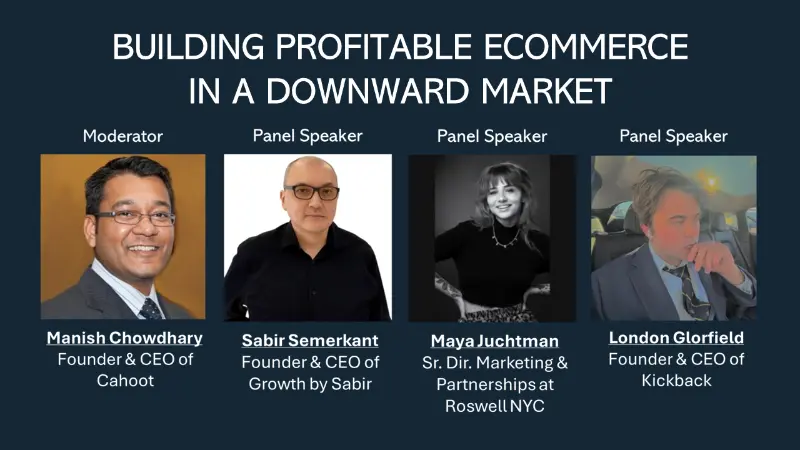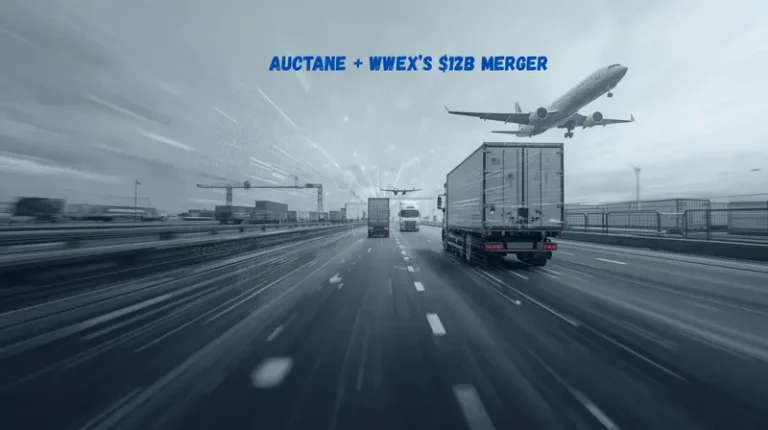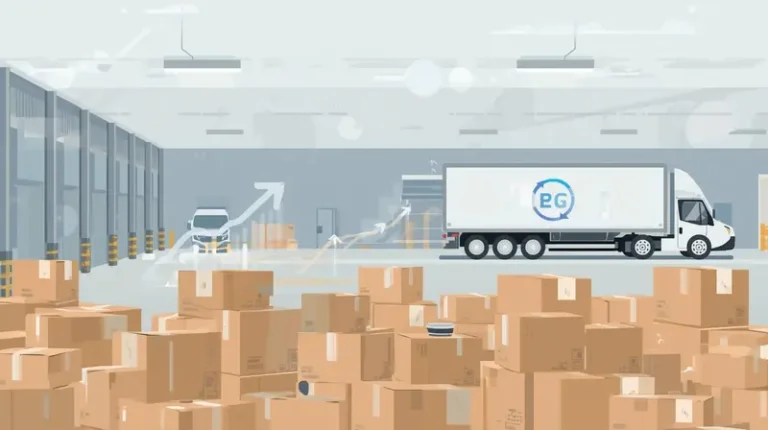The Ecommerce Playbooks That Broke in 2025 (from Ugly Talk NYC)

Last updated on August 25, 2025

If you’re still running your brand like it’s 2020: open rates as your North Star, Pixel-only attribution, and “more SKUs = more sales”, you’re not just leaving money on the table; you’re flying blind.
This piece is a field guide to what stopped working and what operators are doing instead in 2025. It’s tough love, drawn from the Ugly Talk NYC session, “Building Profitable Ecommerce in a Downward Market”, held at NomadWorks in Times Square, New York, in August 2025, and validated with industry data, so founders can course-correct in a market that’s very different from five years ago.
Speakers at Ugly Talk NYC — Meet the Panelists Featured Here
- Manish Chowdhary — Founder & CEO, Cahoot (panel moderator)
- London Glorfield — Founder, Kickback (screenless electronics)
- Maya Juchtman — Senior Director, Marketing & Partnerships, Roswell NYC
- Sabir Semerkant — Founder, Growth by Sabir, helped drive $1B+ in ecommerce growth
(Detailed bios appear at the end of this article.)
Slash Your Fulfillment Costs by Up to 30%
Cut shipping expenses by 30% and boost profit with Cahoot's AI-optimized fulfillment services and modern tech —no overheads and no humans required!
I'm Interested in Saving Time and Money1) Meta Over-Reliance Collapsed
The narrative is overly simplified to “iOS killed Facebook tracking.” The real story: compounding privacy changes across devices and browsers eroded deterministic tracking and last-click storytelling:
- Apple’s App Tracking Transparency (ATT) made cross-app tracking opt-in in 2021, permanently constraining the signal from iOS users. Meta publicly acknowledged conversion under-reporting after ATT (roughly ~15% at first, later ~8% as fixes rolled out).
- Browser defaults now block cross-site tracking whether you run apps or not: Safari’s Intelligent Tracking Prevention has fully blocked third-party cookies since 2020; Firefox’s Enhanced Tracking Protection blocks cross-site tracking by default (with Total Cookie Protection rolled out to all users in 2022).
- Chrome in 2025: After years of Privacy Sandbox testing, Google pivoted: Chrome is not proceeding with a one-size cookie phase-out, moving instead to a user-choice model, removing the “hard stop” many hoped would normalize alternatives. Regulators also signaled they no longer need ongoing commitments tied to deprecation. Translation: third-party cookies persist, but fragmentation is the new normal.
When you depend on one channel’s pixel to tell you the truth, you get whipsawed by platform and policy shifts. As Sabir framed it, treat channels like a diversified portfolio, shift dollars in real-time as signal or platform risk changes, not months later.
“Remember that right after the election, right, that weekend, there were so many creators in tears saying goodbyes on TikTok. And then that Saturday night into Sunday, it was turned back on, right? So that kind of stuff, your business cannot rely on those kinds of things. If that were to happen to me, I would say, ‘Okay, you know what, doesn’t matter. I’m gonna shift my attention over here, right, and I’m gonna just reallocate my time, my energy, my budget towards this, this other set. I don’t have to worry about this one issue that’s happening because it doesn’t have to be a full-on shutdown like TikTok, right? It could be just TikTok rolled out an update, and there was a problem. — Sabir.
What replaces Pixel-only?
A hybrid tracking stack: platform pixel + server-side signals.
- Meta Conversions API (CAPI): Send deduplicated events server-to-server with event_id so the same conversion isn’t counted twice. This is now baseline, not “advanced.”
- Google Enhanced Conversions / offline imports: Hash first-party emails/phones when a purchase happens to improve match rates and bidding; Google is continuing to add flexibility to conversion imports. If you target the EEA/UK/CH, Consent Mode v2 (with a certified CMP) is required to maintain ad features.
Also, remember the baseline privacy gap; roughly a third of internet users use ad blockers at least sometimes, further degrading client-side measurement.
Bottom line: You can’t manage what you can’t measure. Build server-side redundancy, deduplicate, and expect platform models to “fill in” gaps, then validate with lift tests and surveys.
Looking for a New 3PL? Start with this Free RFP Template
Cut weeks off your selection process. Avoid pitfalls. Get the only 3PL RFP checklist built for ecommerce brands, absolutely free.
Get My Free 3PL RFP2) Email Marketing’s Illusion
Email is still a profit engine, but the scoreboard you’ve been staring at is broken.
- Apple Mail Privacy Protection (MPP) preloads tracking pixels regardless of actual opens, thereby inflating open rates and obscuring location and timing data. Apple’s own documentation and reputable email firms agree that opens are no longer a reliable metric. Litmus estimates that over half of opens happen on devices with MPP enabled.
- That’s why operators see 30 – 35% “opens” but real engagement is more like ~10%, exactly what came up at Ugly Talk. The fix: stop optimizing to opens, and tighten to engagement segments.
What to do instead:
- Track clicks, placed orders, and revenue per recipient; use click-to-delivered and unengaged suppression to protect deliverability. Postmark and Constant Contact both emphasize the shift away from open-driven automations.
- If your ESP supports it, use first-party events (add-to-cart, checkout started) as triggers and zero-party data to personalize; no pixel required.
Spray-and-pray is a deliverability death spiral. Trim dead weight and measure behavior, not proxy opens. (Learn more about retention math and LTV/CAC loops.)
3) SKU Bloat Drains Cash and Focus
In a world of higher shipping, tariffs, and tighter cash, SKU creep kills margins and operational agility. The panel’s blunt take: brands with 30 orders and 300 SKUs are waving red flags, and “16 colors doesn’t make you a better parent.” Focus on a hero, then earn the right to expand.
“If you have a brand that you think that, oh, I should have 16 colors, like, why. Why would you? Oh, because I did Semrush and my competitive Google shopping. The intern I hired gave me a report stating that we have three colors, while our competitors have 16 to 32 colors. On average, they have about 24 colors. We have only three. Maybe that’s the problem. So, let’s add 16 other colors to our list to at least be in the playing field. It’s like having 16 more children, but you think that’s going to make you a better parent? It doesn’t make you a better parent at all. In fact, the unit economics: now you have to pay square footage to put that inventory in a warehouse. You have to pay for fuel to transport it from its source to the transfer point. And now, what did you do? You went, you took out a loan to buy that inventory, and now that inventory is dead, sitting over there with nobody buying it. Nobody cares. Remember, there’s one great quote by Henry Ford, the founder of the car company: “The consumers can have any color car they want as long as it’s black”. — Sabir.
Why the old playbook broke:
- Fragmented demand inflates MOQs, inventory carrying, returns complexity, and content ops (photos, PDP copy, reviews).
- Stockouts reset ad learning and nuke momentum; you pay twice when campaigns relearn.
What to do instead:
- Ruthless SKU rationalization: keep hero velocity > everything. Tie launch cadence to supply certainty and gross margin thresholds.
4) AI Content Flood = Diminishing Returns
London pointed out: “More posts” is not the strategy. Consumers, especially Gen Z, spot AI instantly and are rewarding thoughtful, crafted pieces over volume. One handcrafted video outperformed 300 AI-generated videos by 100 times in the panel’s experience.
AI is an accelerant, not an autopilot. Sabir advises sellers to treat it like brilliant interns from MIT, who still need direction. Use AI to draft, summarize, and QA, but creative judgment, community intimacy, and context are the moat.
Scale Faster with the World’s First Peer-to-Peer Fulfillment Network
Tap into a nationwide network of high-performance partner warehouses — expand capacity, cut shipping costs, and reach customers 1–2 days faster.
Explore Fulfillment NetworkThe New Playbook: Measurement and Focus
Here’s the operator checklist our team sees working right now:
A. Rebuild tracking for reality
- Meta: Pixel + CAPI with event_id deduplication; maximize Event Match Quality.
- Google: Turn on Enhanced Conversions (account-level now supported); if you have EEA/UK/CH traffic, implement Consent Mode v2 with a certified CMP.
- Channel diversification: Shift budgets when platform risk arises (policy shifts, bugs, legal issues). Manage channels like a portfolio—reallocate, don’t react months later.
B. Replace “opens” with engagement
- KPIs: unique clicks, placed orders, rev/recipient, unsub rate, inbox placement.
- Maintain unengaged suppression and sunset rules; rebuild win-backs around clicks or site behavior, not opens.
C. Fewer, better SKUs
- Tie assortment decisions to fully loaded unit economics (landed cost, packaging, mailers, warehouse space). Kill variants that stall; scale what compounds.
D. Aim content at “would-watch even if it wasn’t branded”
- Scripted, functional pieces beat floods of AI filler. Utilize AI to expedite specific parts of the workflow.
E. Validate beyond platforms
- Use post-purchase surveys, geo-lift, and holdout tests where possible to sanity-check modeled platform ROAS.
Frequently Asked Questions
Did iOS “kill” Facebook ads?
No, but it killed the old measurement playbook. ATT cut cross-app tracking; browsers block cross-site cookies by default; ad blockers further reduce client-side signals. Meta added CAPI and modeling to compensate, but you must send server-side events and validate with incrementality tests.
Are open rates dead?
For decision-making, yes. MPP preloads images, inflates open times, and hides geolocation/time. Track clicks, orders, and rev/recipient; rebuild automations around behavior, not opens.
Should I still prepare for third-party cookies to vanish?
You should prepare for fragmentation rather than a single cutover. Safari and Firefox already block cross-site tracking by default; Chrome abandoned a hard deprecation and is shifting to user choice. Either way, hybrid measurement and first-party data win.
Where does CAC fit in 2025?
CAC isn’t one number anymore; it’s layered by funnel position, creative, and channel.
Speaker Bios
Manish Chowdhary — Manish Chowdhary is the Founder & CEO of Cahoot, the most comprehensive post-purchase logistics platform for ecommerce brands. We help merchants scale profitably with a bundled suite of services that includes:
- Fast, cost-effective fulfillment (1-day and 2-day nationwide coverage)
- AI-powered multi-warehouse shipping software that selects the cheapest label automatically
- An industry-first peer-to-peer returns solution that eliminates return shipping and restocking costs
With over 100 warehouses and advanced shipping automation, we help brands maintain control, boost speed, and cut logistics costs without the overhead of traditional 3PLs. I’m passionate about helping ecommerce businesses grow smarter. If you’re looking to improve your margins, delight customers, and future-proof your logistics, let’s connect.
My work has been recognized with multiple industry accolades, most recently winning the SaaStock USA Global Pitch Competition 2024. I’m passionate about leveraging technology and collaboration to push the boundaries of e-commerce and logistics, creating new opportunities for merchants worldwide.
London Glorfield — London is a founder and creative strategist who’s built at the intersection of culture and product his entire career. A former RCA-signed artist, he previously ran a creative direction firm and a Squarespace-style software startup. He is currently reimagining consumer electronics with Kickback.world, a fashion-forward audio brand rooted in youth culture and design.
Maya Juchtman — Maya is a creative marketing strategist and partnerships leader known for blending brand storytelling with performance. As Senior Director of Marketing & Partnerships at Roswell NYC, a Webby Award–winning Shopify Plus agency, she’s helped brands like Brixton, Hyperlite, and Curious Elixirs scale through thoughtful strategy and standout campaigns. With a background in customer experience and leading brands through start-up to acquisition, she brings a human-first, culturally aware lens to every project, building community, driving growth, and pushing the boundaries of what digital marketing can be.
Sabir Semerkant — Sabir is the go-to eCommerce growth strategist, credited with over $1B in revenue for 200+ brands from Canon to Sour Patch Kids. Backed by Gary Vee and Neil Patel, Sabir’s Rapid 2X method delivers 2X growth in 12–18 months profitably. Since 2024, it’s powered 70+ brands across 17 industries with an average 108% lift. His Rapid 2X Protocol is the unfair advantage for any eCom brand with product–market fit, engineered to scale revenue and profit even in down markets. Want real talk? Sabir reveals why most brands will fail in 2025 and exactly how to make sure yours isn’t one of them.

Turn Returns Into New Revenue


 10 minutes
10 minutes


